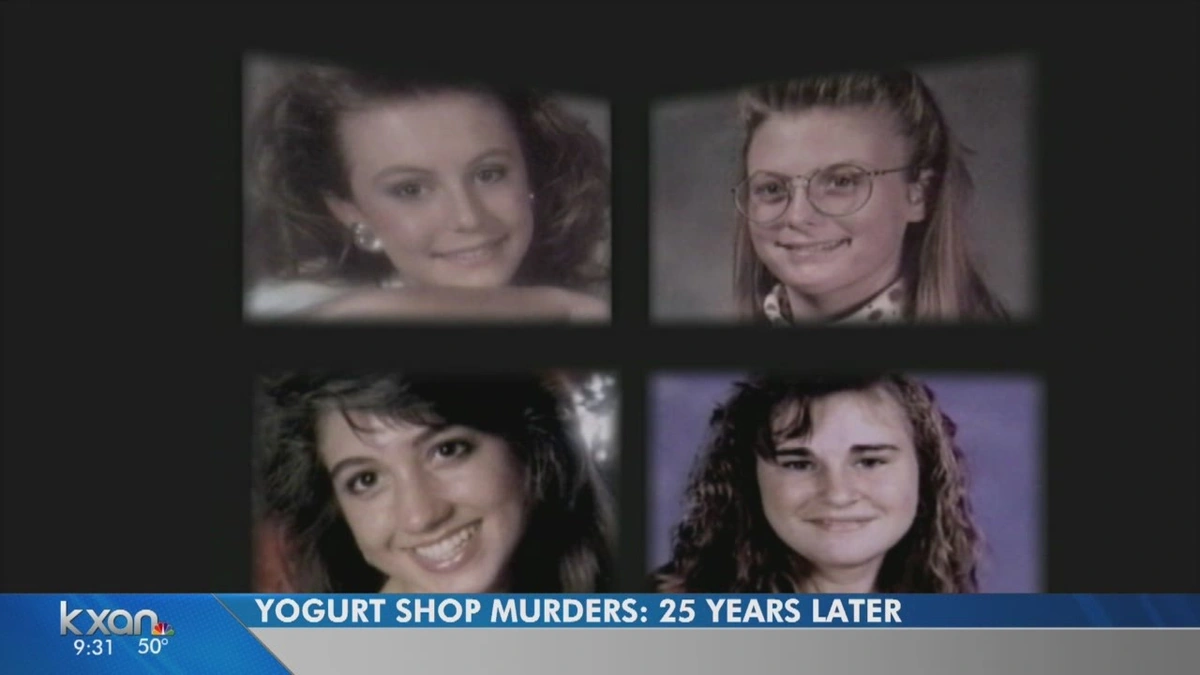Let’s talk about ghosts. Not the kind that rattle chains, but the kind that live in dusty case files and grainy news reports. Some crime stories fade with time, becoming sad footnotes in a city’s history. But others… others stick. They burrow into the public consciousness and refuse to leave. The yogurt shop murders in Austin, Texas, is one of those ghosts.
On the surface, it’s a horrific, unsolved crime from 1991. But if you dig a little deeper, you realize it’s so much more. This isn’t just a whodunit. It’s a story about how our justice system can get things catastrophically wrong, how science can be both a saviour and a tormentor, and how the absence of an answer can be more haunting than any monster we could imagine.
What fascinates me, and what should fascinate you, isn’t just the “who” but the “why.” Why, after more than three decades, does this case still feel so raw and unresolved? The answer lies in a tangled mess of coerced confessions, revolutionary DNA evidence, and the four young lives that were so brutally extinguished on what should have been a normal Friday night.
So grab a coffee. Let’s unpack this together. Because this story is a chilling masterclass in the very real-world consequences of a flawed search for the truth.
A Perfect Friday Night Turns into a Nightmare

First, you have to understand the setting. Austin, Texas, in 1991. It was a city on the cusp of becoming the tech and music hub it is today, but it still had a friendly, almost small-town vibe. And in a strip mall in the northern part of the city sat an “I Can’t Believe It’s Yogurt!” shop a brightly lit, cheerful place where teenagers worked and families got dessert.
On the night of December 6th, four teenage girls were inside. There was 17-year-old Eliza Thomas, who worked at the shop. Her best friend, 17-year-old Jennifer Harbison, was there with her younger sister, 15-year-old Sarah. And their friend, 13-year-old Amy Ayers, had tagged along to hang out after a trip to the mall.
Just think about that for a second. Four girls, on the edge of their lives, laughing and talking in a yogurt shop. It’s the picture of American innocence.
A little before midnight, a police officer on patrol noticed smoke coming from the shop. What firefighters discovered inside was a scene of unimaginable horror. The building was on fire, an obvious arson to cover up a crime. And the four girls were found, bound, gagged, and brutally murdered. The city of Austin was instantly plunged into a state of shock and grief. Who could do something so monstrous?
The pressure on the Austin Police Department was immense. The public wanted answers, they wanted a monster to blame. And when that kind of pressure cooker environment exists, mistakes terrible, life-altering mistakes are often made.
The Investigation | A Labyrinth of False Starts and Coerced Confessions

Here’s where the story takes a turn from a tragic crime into a deeply disturbing legal saga. For years, the investigation went nowhere. There were hundreds of suspects, countless tips, but nothing concrete. The case went cold.
Then, in 1999, eight years after the murders, a breakthrough seemed to arrive. Police arrested four young men: Robert Springsteen, Michael Scott, Maurice Pierce, and Forrest Welborn. Their arrests were based on something that seems rock-solid on the surface: confessions.
But let’s be honest, a confession isn’t always what it seems. Springsteen and Scott, in particular, gave incredibly detailed confessions after hours and hours of intense interrogation. They implicated themselves and the other two men. It felt like the case was finally closed. The city breathed a collective sigh of relief. Justice was being served.
Or was it?
When you actually look at these confessions, the cracks start to show. They were riddled with inconsistencies, both with each other and with the evidence at the crime scene. It became clear to many legal analysts that the police, desperate for a resolution, may have fed details to these young, scared, and vulnerable men. This is a classic, textbook example of a potential coerced confession . I’ve studied cases like this, and it’s a terrifyingly common phenomenon. Under enough pressure, sleep deprivation, and psychological manipulation, a person can be convinced to say almost anything.
Think about it: you’re being told you’ll get a lighter sentence, or that you can finally go home, if you just tell them what they want to hear. Your will breaks. You confess to a nightmare you weren’t a part of. Forrest Welborn never confessed and charges against him were eventually dropped. Maurice Pierce’s confession was also deemed unusable. But Springsteen and Scott were convicted in separate trials in 2001 and 2002, largely on the back of these tainted statements.
The DNA Twist | How Science Both Pointed Fingers and Set Men Free

This is the part of the story that feels like it’s straight out of a movie. While the legal battles over the confessions were raging, forensic science was quietly evolving in the background. And it was about to blow the entire case wide open.
During the original investigation, DNA samples had been collected from the victims. In 2008, a new, more sensitive type of testing called Y-STR analysis was performed on a sample from Amy Ayers. Y-STR testing is particularly useful because it traces DNA through the male lineage. The results were a bombshell.
The test found DNA from an unknown male . An unidentified fifth person was at the crime scene.
But here’s the most critical part: that DNA did not match Robert Springsteen. It didn’t match Michael Scott. It didn’t match Maurice Pierce or Forrest Welborn. It didn’t match anyone they had on record. There was now undeniable scientific proof that a man, who was not one of the four accused, was involved in the crime.
Let that sink in. The state’s entire case was built on confessions that claimed these four men acted together. But the most powerful piece of physical evidence pointed to someone else entirely. The confessions, already shaky, now looked like a complete fiction. The prosecution’s case crumbled.
In 2009, the convictions of Robert Springsteen and Michael Scott were overturned. They were released from prison after spending nearly a decade behind bars for a crime the evidence strongly suggested they didn’t commit. The Austin yogurt shop murders case was once again unsolved.
Why This Case Still Haunts Us | A Legacy of Unanswered Questions

So, we’re back to the original question. Why do we still talk about this? It’s because the I Can’t Believe It’s Yogurt murders left behind a legacy of destruction that went far beyond that tragic night.
First, there is no justice for the girls. The families of Eliza, Jennifer, Sarah, and Amy have lived in a state of limbo for over 30 years. They saw arrests, convictions, and then watched it all dissolve into nothing. Their nightmare has no ending.
Second, the lives of the accused men were shattered. Even though they were released, they lost years of their lives and will forever be associated with one of the most infamous crimes in Texas history. Maurice Pierce, one of the original four, was killed by Austin police in an unrelated incident in 2010. He never saw his name fully cleared.
And finally, the case serves as a terrifying cautionary tale. It forces us to ask deeply uncomfortable questions about our own justice system. How much do we trust a confession? How do we balance public pressure for answers with a meticulous, unbiased investigation? The yogurt shop murders stand as a monument to what happens when that balance is lost.
The ghost of this case isn’t just the crime itself. It’s the ghost of a failed investigation. It’s the ghost of the unknown man whose DNA sits in a database, waiting for a match. It’s the ghost of a truth we may never find.
Frequently Asked Questions About the Case
What exactly happened in the yogurt shop murders?
On December 6, 1991, four teenage girls Eliza Thomas, Jennifer Harbison, Sarah Harbison, and Amy Ayers were murdered inside an I Can’t Believe It’s Yogurt! shop in Austin, Texas. The shop was then set on fire in an attempt to destroy evidence.
Were the four men who were arrested actually guilty?
This is the central question. While two men were convicted based on confessions, their convictions were later overturned due to new DNA evidence that pointed to an unknown male at the scene. They were released from prison, and legally, they are presumed innocent. The case remains officially unsolved.
What is Y-STR DNA testing?
Y-STR (Y-chromosome Short Tandem Repeat) is a type of DNA testing that specifically analyzes the Y-chromosome, which is passed down from father to son. It’s extremely useful in cases with multiple contributors or for identifying male DNA in a mixed sample, which is exactly what made it so crucial in this case.
Why are the confessions considered so controversial?
The confessions of Robert Springsteen and Michael Scott are controversial because they were obtained after long interrogations, contained numerous factual inconsistencies with the crime scene, and contradicted each other. Legal experts believe the suspects were psychologically coerced and fed information by police, making the confessions unreliable.
Is there any hope of solving the case now?
There is always hope, especially with advancing forensic technology like genetic genealogy the same method used to catch the Golden State Killer. The “unknown male” DNA profile is in federal databases, and investigators hope for a future match that could finally bring some answers to this 30-year-old mystery.
Ultimately, the yogurt shop murders case is more than a true crime story. It’s a sobering look into the abyss. It shows us that the pursuit of justice is a human endeavour, and because of that, it is profoundly, tragically, and sometimes irreversibly flawed. The story endures not because it’s a mystery, but because it’s a tragedy on every single level for the victims, their families, and the men who lost a decade of their lives in a system that failed them all.




